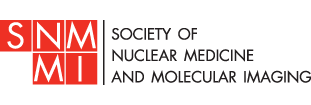Member Fee: $45
Non-Member Fee: $90
Release Date: 7/1/2013
Expiration Date: 7/30/2016
Continuing Education Credit Information
ABNM SAM Credit
The
American Board of Nuclear Medicine has reviewed and approved this Journal SAM
activity submitted by the SNMMI. This activity fulfills the requirements of the
ABNM Maintenance of Certification program for self-assessment. 2.5
SAMs have been awarded for this activity.
AMA-PRA (Physician)
The Society for Nuclear Medicine and Medical Imaging, Inc. (SNMMI) is
accredited by the Accreditation Council for Continuing Medical Education
(ACCME) to provide continuing medical education for physicians.
SNMMI designates this enduring material for a maximum of 2.5 AMA PRA Category 1 CreditsTM. Physicians should claim only credit commensurate with the extent of their participation in the activity.
Objectives
On successful completion of this activity,
participants should be able to:
1. The radiopharmaceuticals used to evaluate nigrostriatal DA imaging
2. The pattern of uptake of these radiopharmaceuticals in Parkinsonian syndromes
3. The role of these radiopharmaceuticals in the evaluation of Parkinsonian syndromes.
Target Audience
The
LLSAP is designed for all nuclear medicine specialists and other physicians,
pharmacists and technologists who practice diagnostic and/or therapeutic
nuclear medicine.
Klaus Tatsch
Department
of Nuclear Medicine, Municipal Hospital Karlsruhe, Inc., Karlsruhe, Germany
Gabriele
Poepperl
Department
of Nuclear Medicine, Katharinenhospital, Klinikum Stuttgart, Stuttgart, Germany
Disclosure
Dr.
Tatsch is a meeting participant/lecturer for GE Healthcare. In accordance with
ACCME Revised Standards for Commercial Support and SNM Conflict-of-Interest
Policy, the authors have indicated no other relevant relationships that could
be perceived as a real or apparent conflict of interest. Disclosure of a
relationship is not intended to suggest or to condone bias but is made to
provide participants with information that might be of potential importance to
their evaluation of the activity.

